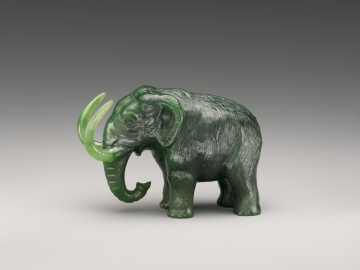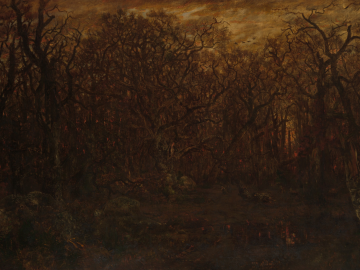How Being Human Led Me to Better Science Outcomes
Blake Chapman
Here’s what you need to know about me—my qualifications, if you will: 1) I am a trained research scientist in the field of sharks; 2) I am a human being; and 3) I want to help people to better understand sharks. I suppose you could also consider me a conservationist. Although the conflict between these things might not immediately jump out at you, these individual facets of ‘me’ often do not play nicely together in the public domain. The problem is, supporting sharks and being pro-human are often perceived as opposing desires.
For a long time, I relied on my research training and use of rigorous scientific knowledge to try to meet my communication objectives, but I didn’t get far. Surprisingly for me, it wasn’t until I allowed myself to fall back on just being a human that I really started to make positive headway in having meaningful conversations with people about sharks. While my focus has been on the topic of ‘sharks’, the insight I developed could easily be interchanged for ‘vaccines’, ‘agriculture’, ‘reproductive medicine’, or any of the myriad other research fields that involve emotionally-fuelled, ethical debates over what constitutes right and wrong.
Scientific discovery is unquestionably exciting. However, the critical reliance on technical detail, statistical significance and reproducibility unfortunately tends to produce rigid, to-the-point scientific publications. The process works well for scientists communicating with their peers, as the exciting ramifications of the data can be more easily deduced by these specialised audiences. But ‘science speak’ doesn’t often lead to opportunities for greater impact. I learned that for science to make real waves within the broader community, we need to be prepared to invite in the ‘human-factor’. This can be quite confronting, because, well, humans are unpredictable and carry all of the emotional baggage that has been purposefully removed from science.
*
I finished my PhD in shark neuroscience in 2009. I’d studied sharks and their eyes for five years, published academic papers and also the occasional popular science article. But then my interests shifted away from lab-based neuroscience to human-shark interaction (better known as shark attacks)—which pushed me face-first into the community. And with this push came the quick realisation that my in-depth scientific knowledge, alone, left me very unprepared for communicating with this new audience.
The difference? Most importantly, human experience and emotion. Fear, preconceptions, the overwhelming influence of non-factual media. I can almost guarantee that no one who read my early science communication work had any preconceptions about shark eyes! But now, I could no longer present information and expect to be on the front foot; instead, I had to first acknowledge (this was key) and address all of these preconceptions, evolutionarily rooted fears and even personal experiences. I suppose I should have been tipped off by the ‘human’ in human-shark interaction. But ultimately, my science had nothing on humanness. To really make the impact I wanted within society, I was going to have to abandon my ‘science speak’ and give in to just being human: a human armed with great science.
Step 1 was to take a step back. I had to temporarily push all of my scientific knowledge, as well as my personal feelings, biases and experiences (I am a human, too, after all!) to the back of my mind in order to thoroughly understood what other people felt, what they really wanted to know, and why.
This took me way out of my introverted comfort zone and into (personally) unchartered territory. I sought out and talked to as many people I could, and I listened to people who covered the entire emotional spectrum, ranging from love to hate, fear to curiosity, and also people who were really just unsure and confused about sharks and their interactions with humans.
While out talking to people, I realised that I still absolutely needed to know the science. And it was through continued review of published research (but this time into human fear and risk perception) that I had my major ‘ah-ha’ moment. That was that humans are really bad with numbers! This may come as a surprise; it did to me. But the more I thought about it and the more I tested this new knowledge, the more I realised how true it is. I had been trying to communicate with people through statistics and these really big and really small numbers around likelihood and chance. ‘Science speak’. I couldn’t have chosen a less effective tactic.
Would you feel any different after learning that you had a 1 in 3,748,067 chance of being killed by a shark or a 1 in 1,748,067 chance? Would the first number allow you to go for a swim at the beach without concern, while the second presented a cause for concern? I seriously doubt it. Both of those numbers are far too large for the human brain to comprehend or differentiate. Yet the latter is less than half of the first – so a very important difference. Instead, the human brain (humanness) is far more concerned with the ‘1’ in front. This we understand all too well. It means: ‘yes, there is a chance’, and it is that part of the statistic that prevents so many people from entering the ocean. The second number is pretty much irrelevant. (Still, for those like me that do have that compulsive need for fact, the first number is the correct stat).
The same holds true for the estimate of the number of sharks that are killed by humans every year. The currently accepted ‘number’ is 63,000,000 to 273,000,000 animals. Not only is this not a single number, it also covers an enormous range. But again, when the numbers are this large, does the exact number really matter (for the purpose of discussing sharks with the public, that is)? I can’t even begin to imagine what 63,000,000 dead sharks would look like, let alone 273,000,000.
The other problem with numbers is that they fail to account for society. We are not individual, isolated ‘1s’ in these statistics. Instead, we are part of a highly entwined, very communicative society that has an evolutionary history in story-telling. While your individual chances of being bitten by a shark are incomprehensibly small, the odds of knowing someone who has in some way been affected by a shark bite are less incomprehensibly small. When you add the modern story-telling opportunities made possible by the internet, social media, and 24/7 news, the odds of having heard about someone who was bitten by a shark become huge. Understanding society’s influence is enormously important.
*
I once spoke with an extremely senior surgeon with decades of experience treating life-threatening traumas – and mentally compartmentalising these experiences from his own everyday life. Yet, after treating a patient who had been bitten by a shark (and survived), he immediately knew he would never go into the ocean again, nor would he let anyone in his family. Despite the fact that the injuries themselves hardly differed from those he treated every day.
Others have had similar stories. The most ironic detail that several of these people added was that while they stopped doing water-based activities because of the impact sharks have had on their lives, they continued to ride motorbikes, despite the acknowledged far greater risk. People’s feelings may seem illogical, but if you dig down, there is often a reason. In this case, the statistically backwards acceptance of risk between ocean and motorbike use stems from humans’ deep-seated evolutionary fear of predators, as opposed to the modern risk of motorbikes. But human unpredictability is a thing, and it highlights the importance of understanding the humanness of how a topic is perceived.
Armed with all of my new knowledge—both scientific and societal—I set out to pursue my communication ambitions again. Now, at the beginning of conversations, I ask lots of questions and I listen to other people’s stories. I’ve realised you will never truly get through to someone unless you first consider their lived experiences and feelings. Then, you can introduce the all-important science—but only that which is relevant, mixed with the appropriate emotion. Not only do you target your audience more precisely, but this approach also gives people an opportunity to put the pieces together for themselves. This provides them with ownership of their new knowledge, encouraging long term retention and more knowledge sharing.
I’ve also found that people engage with me more when I am honest and unbiased. Answers are not always black and white and admitting to uncertainty, that we might just not know something, or that the science is inconclusive, should not been seen as a weakness. Overall, I think these ‘human’ aspects of science generate more acceptance of what we do know. And isn’t this the goal?
By embracing the humanness in society, I have gained a much better understanding of the place of my science in the real world, and also how to translate and present science for the greatest impact. I would now argue that every researcher could improve on their impact to the community by taking the time to really and thoroughly understand the social landscape that their work fits into. And just like scientists would urge people to not learn from unqualified sources; the same holds true for scientists who want to learn about the real needs of society. You can’t do this from a desktop. Although possibly confronting, understanding your audience involves getting out there, having the tough conversations with a range of people, and really listening to the concerns that they air (statistically justified or not). Doing so will provide a much clearer image of how your work can really create the difference you want it to make.
Featured image via The Met Collection


